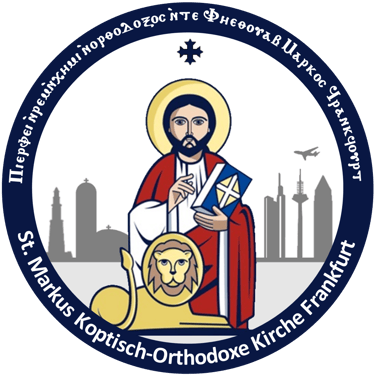10 Things I wish I'd known before entering an Orthodox Church
1. Are we there yet?
A 2-3 hour liturgy may seem long, but believe it or not, this is the shortened version of the original 5+ hour liturgy of the early church. You will probably ask yourself several times during the service: "Can't this be said more briefly? Can't extra adjectives be deleted?" Here is the truth: If there is a longer way to say something, we Orthodox will find it.
Even if you don't see it at first glance, every prayer is intentional and crucial to the service. It helps to remember that the core of our life as a church family is the Holy Eucharist (Communion) and every prayer is prayed in preparation for receiving the Holy Body and Blood of Christ.


2. Take a seat, now stand up, now sit down, now stand up
According to Orthodox tradition, we are required to stand most of the time during the service; however, in most churches you will find benches or chairs that you are welcome to use. Standing becomes easier with a little practice.
According to Orthodox tradition, believers stand for almost the entire service. Really! If you find all the standing too tiring, feel free to sit down. It doesn't bother anyone and probably no one will notice. Long-term standing becomes easier with a little practice.
3. The sign of the cross
To say that we make the sign of the cross frequently would be an understatement. Some of us even do it when we yawn! However, we usually do it when the Trinity is invoked, when we venerate our Lord on an icon, or when we hear the words "adoration" and "glorification." This is not set in stone, but rather a personal opinion.
Here's how it's done: Traditionally, we hold our hands in a prescribed way - right thumb and the first two fingertips pressed together, the last two fingers pressed to the palm, crossed from left to right. Can you imagine the symbolism? Three fingers together for the Trinity; two fingers placed on the palm of the hand for the one nature of Christ, both fully human and fully divine, and his coming to earth.
This also requires practice. Don't worry: a beginner's inaccurate placement of his fingers won't get him denounced as a heretic.
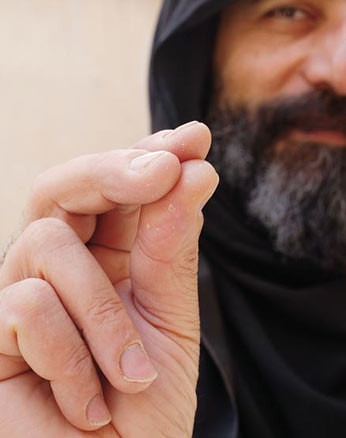

4. Kissing in church
You are probably wondering why and how the Orthodox Church incorporates a kiss into the liturgical service. Well, my friend, since a kiss is an expression of sincere love, you can catch us kissing icons, relics of saints, and the hand of a priest when we greet him.
During the service you will hear the deacon say, "Greet one another with a holy kiss." (2. Cor 13:12). Don't worry, you too can take part, and it's not as tiring as you might imagine: both palms touch, thumbs crossed, you touch your neighbor's hands and then kiss your own hand. Repeat that. This kiss of peace reminds us that it is the Spirit of Christ that binds us all together, even if we don't know each other very well.

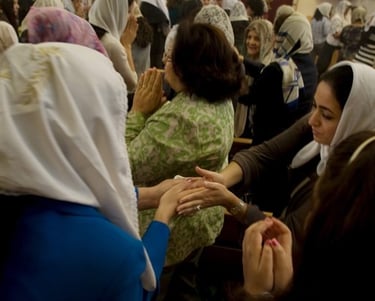
5. We don't just break bread in the Olive Garden
At the heart of the entire service is the Holy Eucharist (or Communion), as we believe it to be the very Body and Blood of Jesus Christ. As such, it is reserved for those baptized in one of the 6 non-Chalcedonian churches. This is not intended as exclusion, but rather as reverence for the treasure reserved for those who have associated themselves with the Church.
The bread distributed after the liturgy is not the Eucharist; However, it was prayed by the priest during the "Presentation of the Lamb" and everyone is invited to attend as a sign of community. The bread itself carries - you guessed it - a lot of symbolism: it's a circle to symbolize that God has no beginning or end, and it's stamped to symbolize Christ's wounds, his apostles, and more. We can get into that later...


6. Fasting: the Orthodox Diet
Those interested or new to fasting are often surprised by the orthodox practice of fasting. Orthodox Christians fast vegan for a total of more than 180 days a year, which seems hard to swallow (pun intended). We abstain from consuming meat, fish and dairy products almost every Wednesday and Friday and five other periods of the year. This practice is not one size fits all and is guided by one's confessor based on physical and mental abilities. It is a personal practice and frankly no one else's business. It is important that we remember the following:
1) Fasting is used by the Church as a means of disciplining our bodies and strengthening our minds.
2) It is an exercise that is intended to lead to spiritual growth with some practice.
3) Fasting is a practice that stretches and strengthens us, a medicine for the health of our soul.
In consultation with your confessor as your spiritual doctor, you can create a fasting plan that will stretch you but not break you. Next year you might be ready for more.
7. Music, Music, Music
A very large part of the service consists of congregational singing.
Traditionally the Copts only use the triangle and the cymbal and we like to get really crazy with these instruments like King David used to do. You will also notice that the congregation also sings responses during the liturgy. If you feel called to do so, don't be shy... please sing along!
The words and melody of the hymns are meaningful, and you will find that different seasons have a different melody.
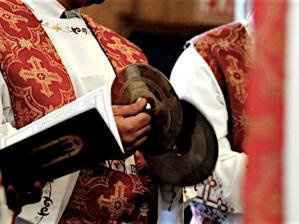

8. Wait, is that smoke?
Don't worry, we have it under control. The smoke you see is the incense released by the priest from the censer. In the Orthodox Church, incense represents prayers and repentance that rise to heaven and is also intended to appeal to our senses. Every time the priest passes by with the censer, your prayers and the prayers of all believers arise before the throne of God Himself.
"Now when he had taken the scroll, the four living creatures and the twenty-four elders fell down before the Lamb, each having a harp, and golden bowls full of incense, which are the prayers of the saints." Revelation 5:8
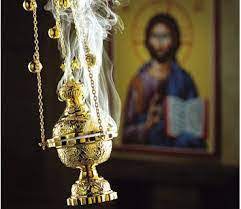

9. Our Champions - the Saints
An integral part of Orthodox service is the veneration (not worship!) of the saints and especially the Virgin Mary. We often address her as “Theotokos,” which means “Mother of God.”
We believe that the saints who have left this world are still alive and remain part of the Church. They are the victors, for they have finished the race and received the prize of eternal life, and as we remain the fighting church here on earth, we ask for their prayers.
Contrary to popular belief, we do not worship the saints, but we do ask for their prayers for us! This is the same as asking a friend, family member, or clergyman to pray for you; one does not pray to them, but rather asks for their intercession before the Lord.
10. Where does a non-Orthodox fit in?
You may find that some Orthodox churches cling to their diaspora and don't understand why outsiders should care; However, here at COR we want to share the treasure of Orthodoxy with everyone. Our goal is to leave no question unanswered, and so we hope that Orthodoxy and the Church will no longer be so foreign to you, but that you will feel more at home.
You may be aware that there are a variety of Orthodox churches: Coptic, Greek, Romanian, Russian, Antiochene, Serbian, etc... There are about 250 million people worldwide, making Orthodoxy the second largest Christian community.
You'll probably find that some Orthodox churches are still so tied to their immigrant experience that it's a mystery to them why outsiders should care about them. In these churches people usually pray in their native language. In our community we try to meet all needs by holding services in Coptic (because we are Copts and are proud of this language), in Arabic (because it is still the language of the 1st and 2nd generations) and on in German (for everyone else). We hope that we will be able to pass on the treasure and spiritual depth that the Orthodox Church has. Plus, you'll always find someone who can answer any questions you have along the way.
Orthodoxy seems startlingly different at first, but as the weeks go by that will become less and less the case. It will feel more and more like home and gradually draw you into your true home, the Kingdom of God. Come see it for yourself, especially now that you have the perspective.
Adapted from a list by Frederica Mathewes-Green
